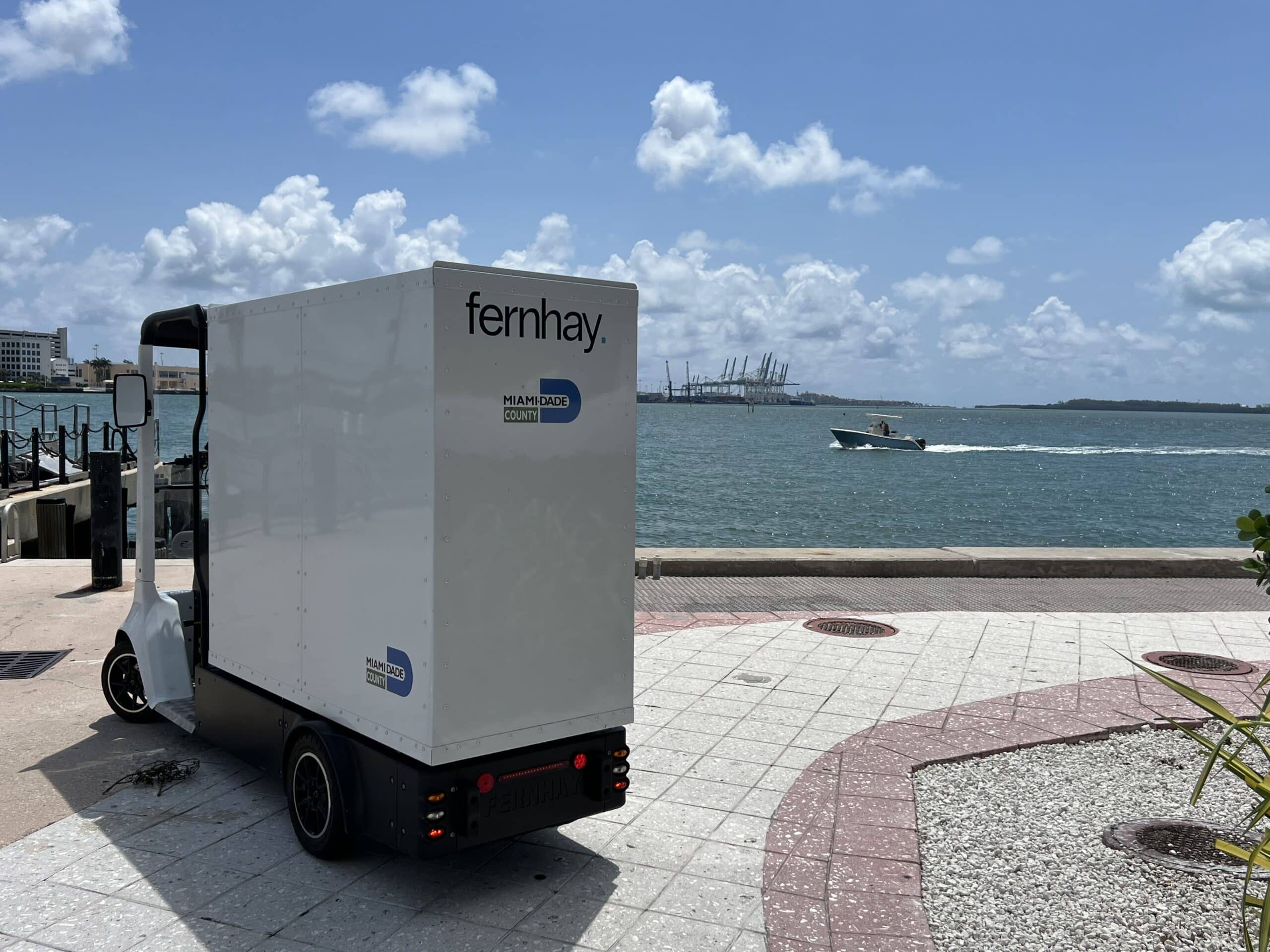Urban delivery logistics have evolved significantly with the rise of e-commerce and the growing demand for quick, efficient, and eco-friendly solutions. However, the challenges of navigating congested city streets, meeting tight delivery windows, and reducing the carbon footprint remain pressing concerns. Fernhay’s innovative solution, eQuad, designed to address these urban delivery challenges.
The Urban Delivery Dilemma
Urban areas are the lifeblood of modern commerce, but they also present unique challenges for logistics companies. With increasing urbanisation, the demand for last-mile delivery has skyrocketed, but so have the difficulties:
- Traffic Congestion: City streets are often clogged with vehicles, leading to delays in delivery times.
- Environmental Impact: Traditional delivery vehicles contribute to pollution, exacerbating the environmental challenges cities face.
- Space Constraints: Finding parking spots for delivery trucks in densely populated areas is a persistent issue, causing further delays and inefficiencies.
These challenges are compounded by the growing consumer expectation for fast, reliable deliveries, often within the same day. As businesses strive to meet these expectations, the need for a more innovative approach to urban logistics becomes increasingly evident.
A Revolutionary Approach
Fernhay’s eQuad is a purpose-built electric quadricycle designed specifically for urban deliveries. It offers a practical solution to the most pressing issues faced by delivery companies operating in cities:
1. Compact Design
The eQuad’s compact size allows it to navigate narrow streets and tight spaces where traditional delivery vehicles cannot go. This design significantly reduces the time spent searching for parking and allows for more direct access to delivery points.
2. Zero Emissions
As an electric vehicle, the eQuad produces no tailpipe emissions, making it an environmentally friendly option that helps cities reduce their overall carbon footprint. This is particularly important in metropolitan areas where air quality regulations are becoming increasingly stringent.
3. Increased Efficiency
The eQuad is equipped with a cargo area that is optimised for parcel delivery, allowing for quick loading and unloading. This efficiency is crucial in maintaining the tight schedules required for urban delivery routes. Moreover, the vehicle’s design ensures that it can handle a substantial volume of deliveries without compromising on speed or reliability.
4. Enhanced Safety
Designed with the urban environment in mind, the eQuad includes features that ensure the safety of both the driver and pedestrians, such as improved visibility and maneuverability. This focus on safety not only protects the driver and the public but also reduces the risk of accidents that could lead to costly delays or damages.
Benefits for Logistics Companies
Implementing the eQuad into an urban delivery fleet offers several advantages:
- Reduced Delivery Times: The ability to bypass traffic and park closer to delivery destinations means faster deliveries and increased customer satisfaction. This can be particularly beneficial in areas with high delivery density, where every minute saved per delivery can significantly impact overall efficiency.
- Cost Savings: Electric vehicles like the eQuad have lower operating costs compared to traditional delivery trucks, with savings on fuel and maintenance. Over time, these savings can add up, making the eQuad a cost-effective solution even for smaller delivery fleets.
- Brand Image: Companies using environmentally friendly vehicles can enhance their brand’s reputation by demonstrating a commitment to sustainability. As consumers become more environmentally conscious, this commitment can translate into a competitive advantage in the marketplace.
Overcoming the Initial Hurdles
While the eQuad presents a compelling solution, there are some challenges to its widespread adoption:
Initial Investment
The cost of purchasing eQuads may be a barrier for some companies. However, the long-term savings on fuel and maintenance, coupled with potential subsidies for electric vehicles, can offset these initial costs. Moreover, as the demand for sustainable solutions grows, the market for electric vehicles like the eQuad is likely to expand, potentially driving down costs and making them more accessible.
Infrastructure Requirements
To fully benefit from eQuads, cities may need to invest in charging infrastructure. This can be mitigated by the eQuad’s ability to charge using standard electric outlets, but dedicated charging stations would enhance operational efficiency. Additionally, as more electric vehicles are adopted, the development of charging infrastructure will likely accelerate, further supporting the widespread use of the eQuad.
The Future of Urban Delivery with eQuad
As cities continue to grow and the demand for efficient, sustainable delivery solutions increases, the eQuad is poised to play a crucial role in the future of urban logistics. Fernhay’s innovative design addresses the core challenges of urban delivery, offering a practical, eco-friendly, and cost-effective solution that benefits both companies and the environment.
In conclusion, the eQuad is more than just a vehicle; it’s a strategic asset for any logistics company looking to improve their urban delivery operations. By overcoming the challenges of traffic congestion, environmental impact, and delivery efficiency, the eQuad represents the future of urban logistics—where sustainability and efficiency go hand in hand. As cities continue to evolve, so too must the methods by which goods are delivered, and the eQuad is leading the way in this necessary transformation.

